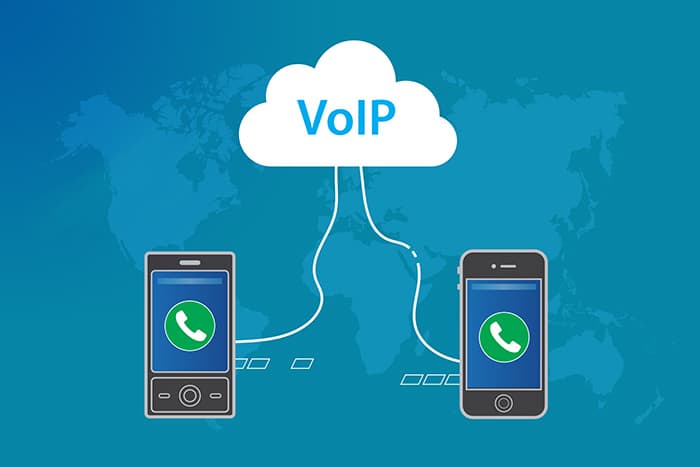The key to good VoIP call quality depends on a few factors such as jitter, latency, and packet loss. We discuss these elements below so you can ensure your business has strong and reliable VoIP quality for customer calls.
Understanding VoIP Call Quality: The Basics
Voice over IP (VoIP) calls use the internet to transmit voice or data packets from one user to their destination. On VoIP calls, your voice is transformed from analog to digital signals in data packets and is sent to your destination. Upon arrival, these packets are converted back to analog and the audio is heard. Data packets generally contain about 20 milliseconds of audio and this whole process occurs at lightning speed.
And while this process seems simple and straightforward, there are a few factors that can affect the quality of the call, interrupting it. Good VoIP call quality depends on keeping the following elements to a minimum:
- Jitter
- Latency
- Packet loss
Let’s look at these issues more closely and ways to troubleshoot them.
Voice Over IP Jitter
For a VoIP or SIP call to take place successfully, data packets must be transmitted from one user to their destination. And these data packets travel through different paths before they reach the destination. As such, all data packets may not take the same path or time to arrive.
VoIP jitter refers to the data packets being delivered to the destination at irregular intervals instead of being delivered at the same time. In other words, one packet is delivered after the rest of the packet. This can lead to low VoIP call quality with missing or jumbled audio.
How to fix network jitter?
Generally speaking, 30 milliseconds (or less) jitter is acceptable. However, more than that can lead to serious call quality issues, affecting your calls and customer care efforts. And so, to fix jitter issues, you must first check your network and ensure you have a good internet connection.
Another way to fix network jitter issues is by using a jitter buffer. This is a space where packets are collected and stored. Then, they are sent out at regular intervals ensuring they move in the right order.
VoIP Latency
Voice over IP latency refers to lag or delay within the call. More specifically, it’s the delayed time between a caller speaking and the receiver hearing the audio. This lag or delay can lead to speakers talking over each other or echoes in the middle of the call.
It is also important to note that international calls may experience more latency than domestic or local calls. And while it is not desirable, users generally tend to accept latency in long-distance calls more than local ones.
How to fix this issue?
Latency does not necessarily affect VoIP call quality. However, it does make the caller experience less desirable, giving way to frustration and miscommunication.
Most of the time, latency is a result of network congestion, which also contributes to jitter. To combat this, you should prioritize voice over IP data ahead of other data transmitted across your network. And a high-quality VoIP router can help with this as well as other issues that may crop up within a VoIP phone system.
Voice Over IP Packet Loss
Understanding packet loss is pretty straightforward. It refers to data packets lost during transmission from one user to their destination. Packet loss occurs when:
- Data packets are lost and never arrive at the destination
- Packets arrive late and are discarded as a result
- Packets contain errors and are discarded
- High data packet loss which results in low VoIP call quality or missing pieces of audio.
When data packets go missing, communication between two parties is incomplete or unclear. Troubleshooting this issue is similar to fixing network jitter and latency: check your network. Congested networks where multiple and large files are downloaded or uploaded or transferred can lead to packet loss. Therefore, to ensure low to no packet loss:
- Make sure you have enough bandwidth.
- Minimize network congestion (don’t stream videos or download music or send large email attachments).
Get a Reliable VoIP Provider
To ensure you do not suffer through these issues, it is important to find a VoIP number provider that can handle your voice over IP traffic. Learn more about our VoIP service by speaking with one of our experts today. Call us at 1 (877) 898 8646 or chat with us online for more information!


